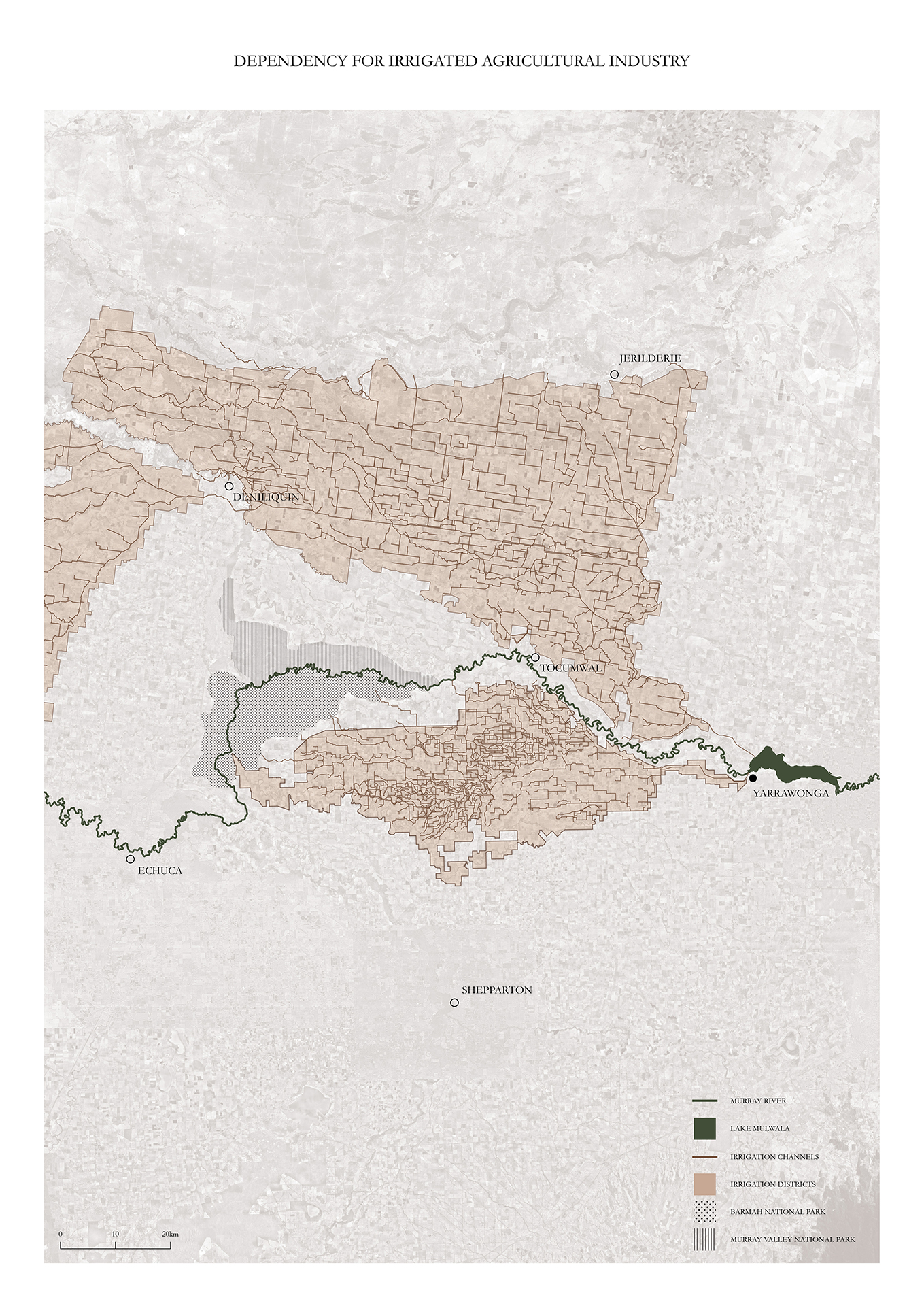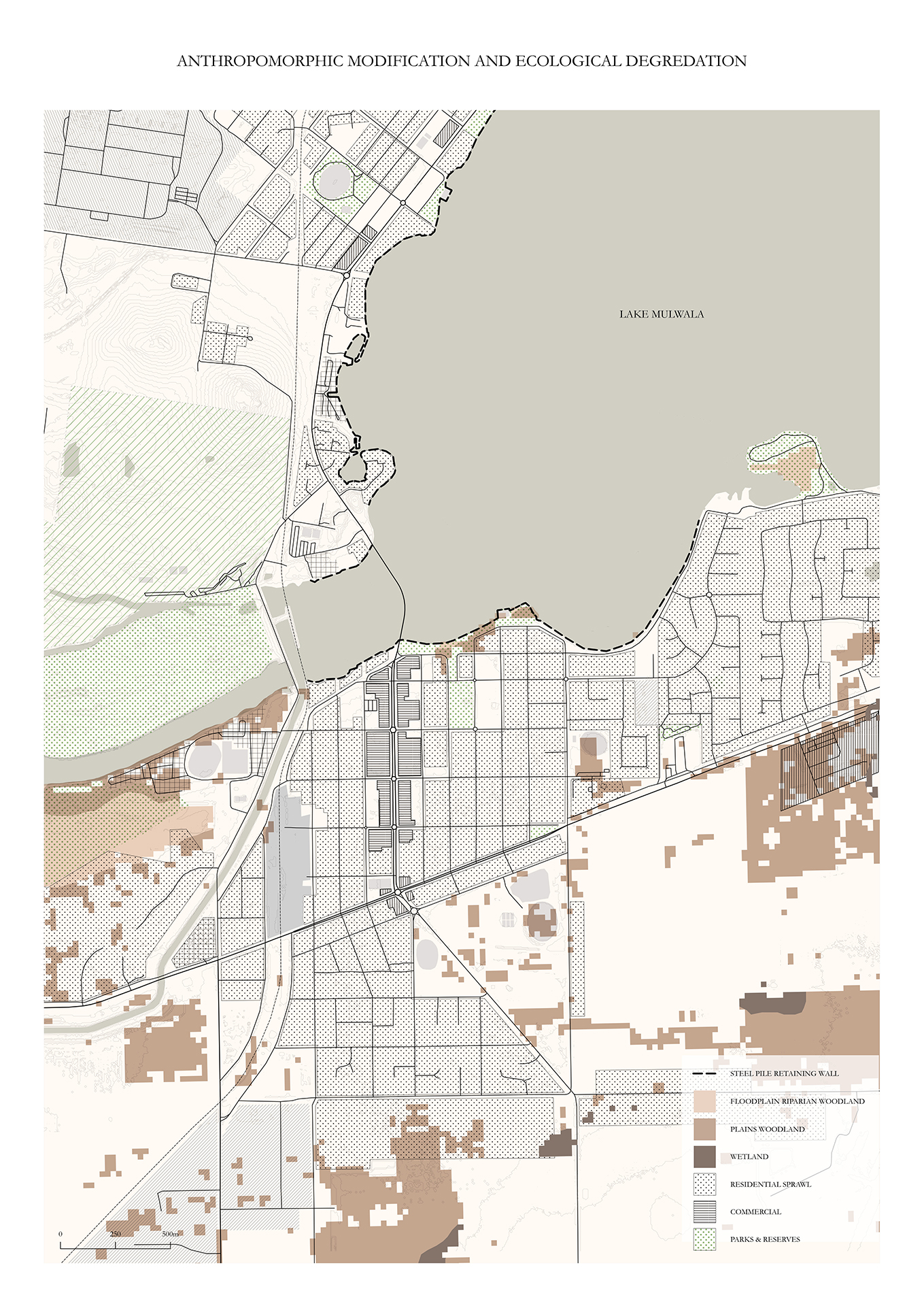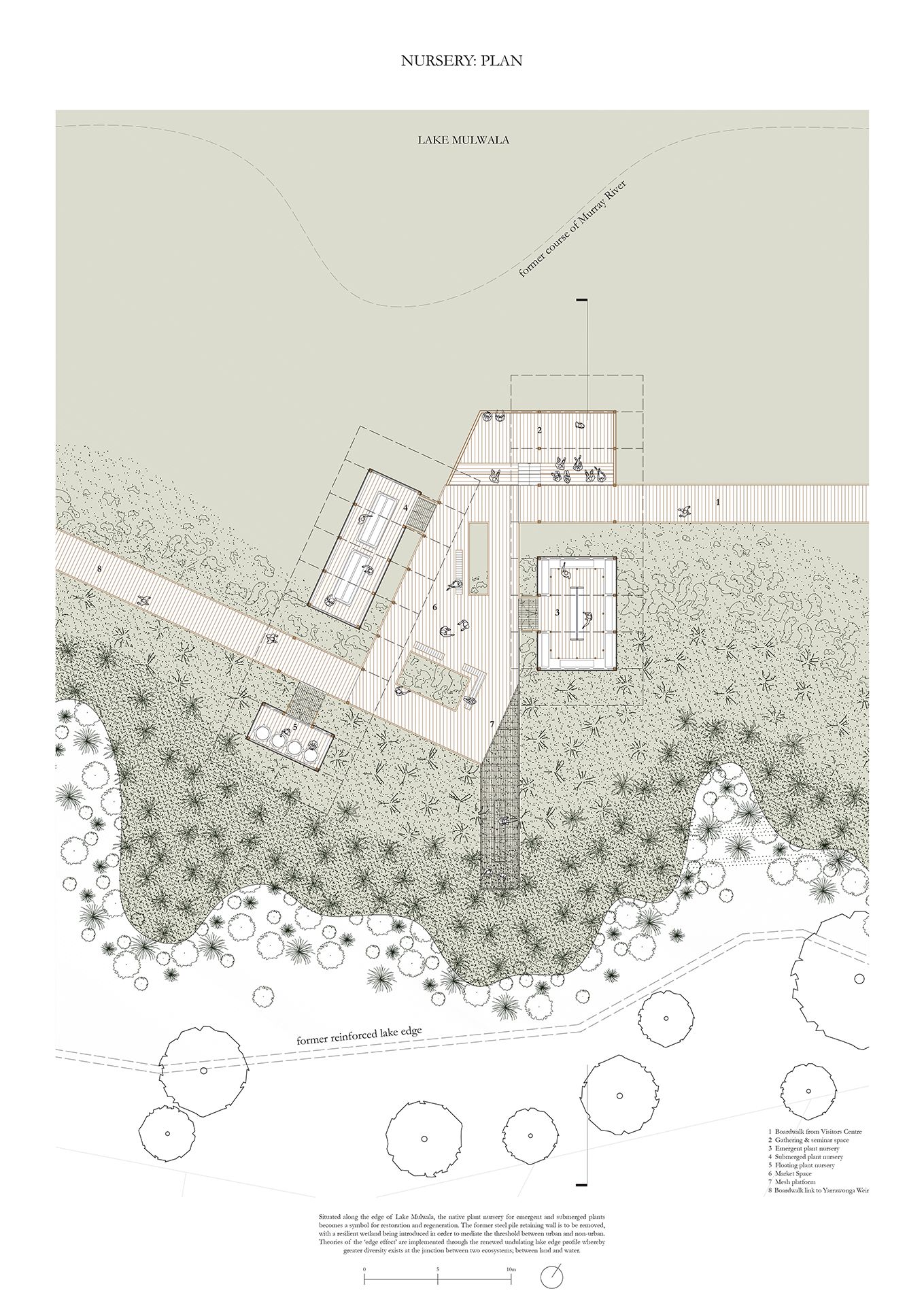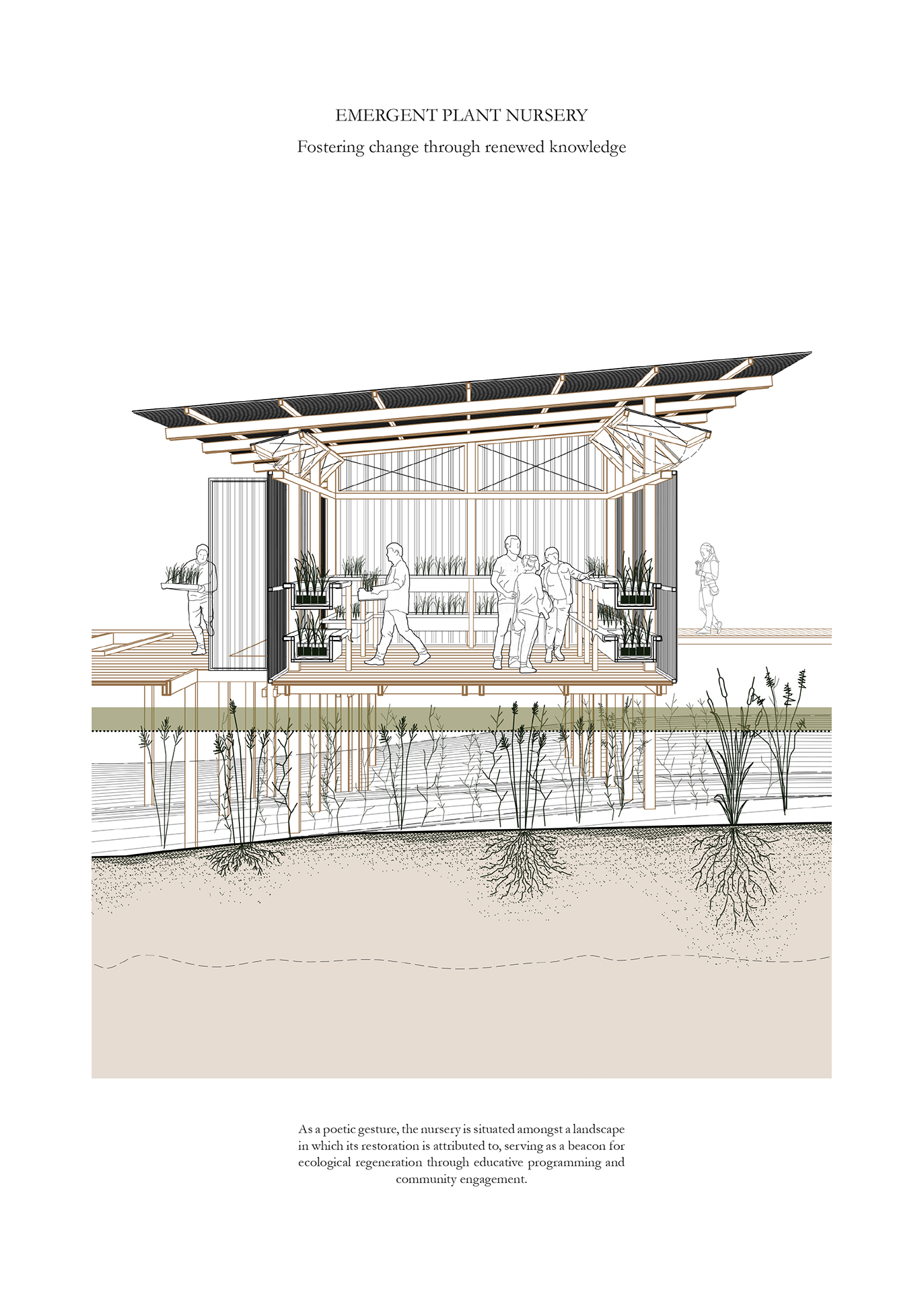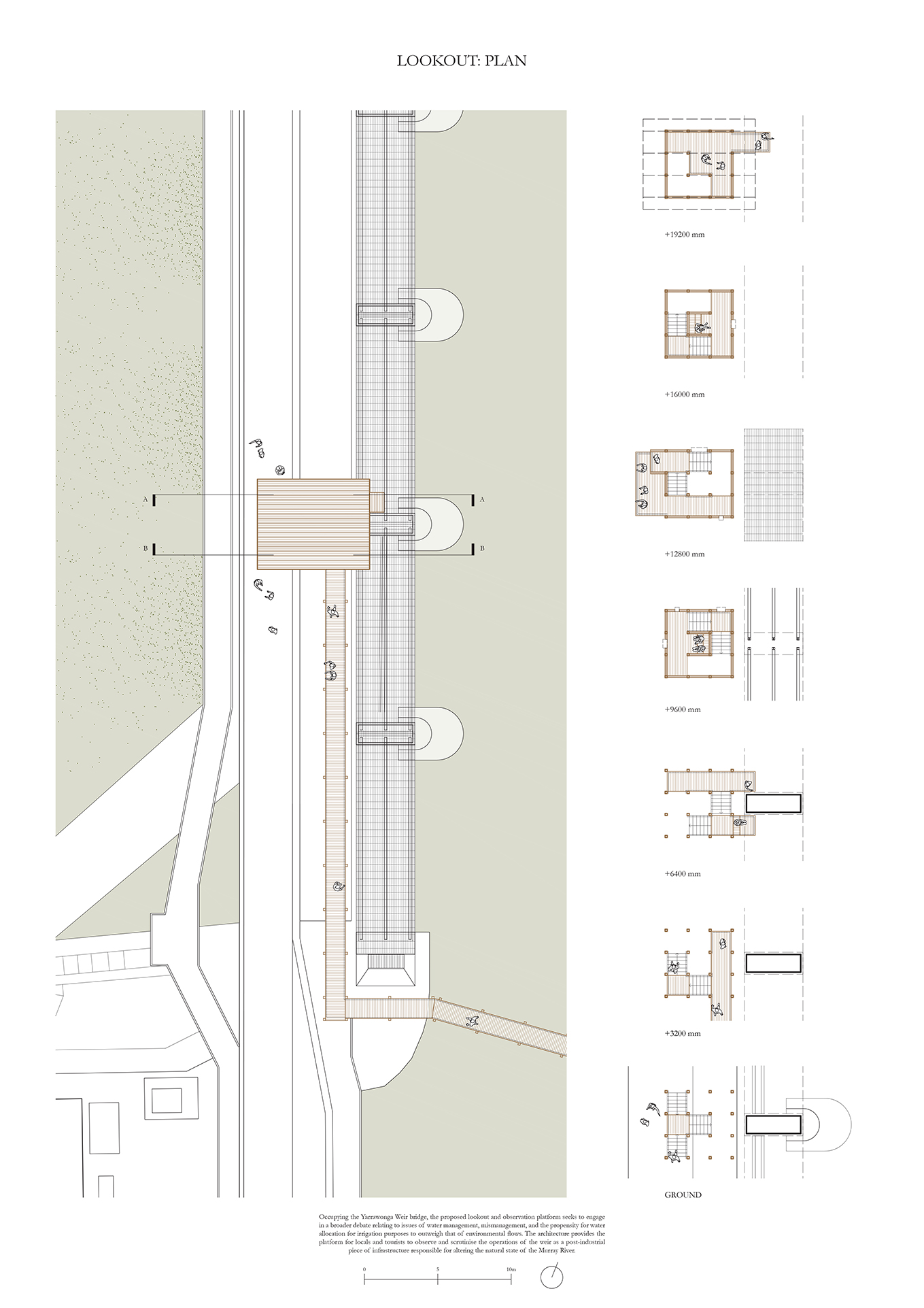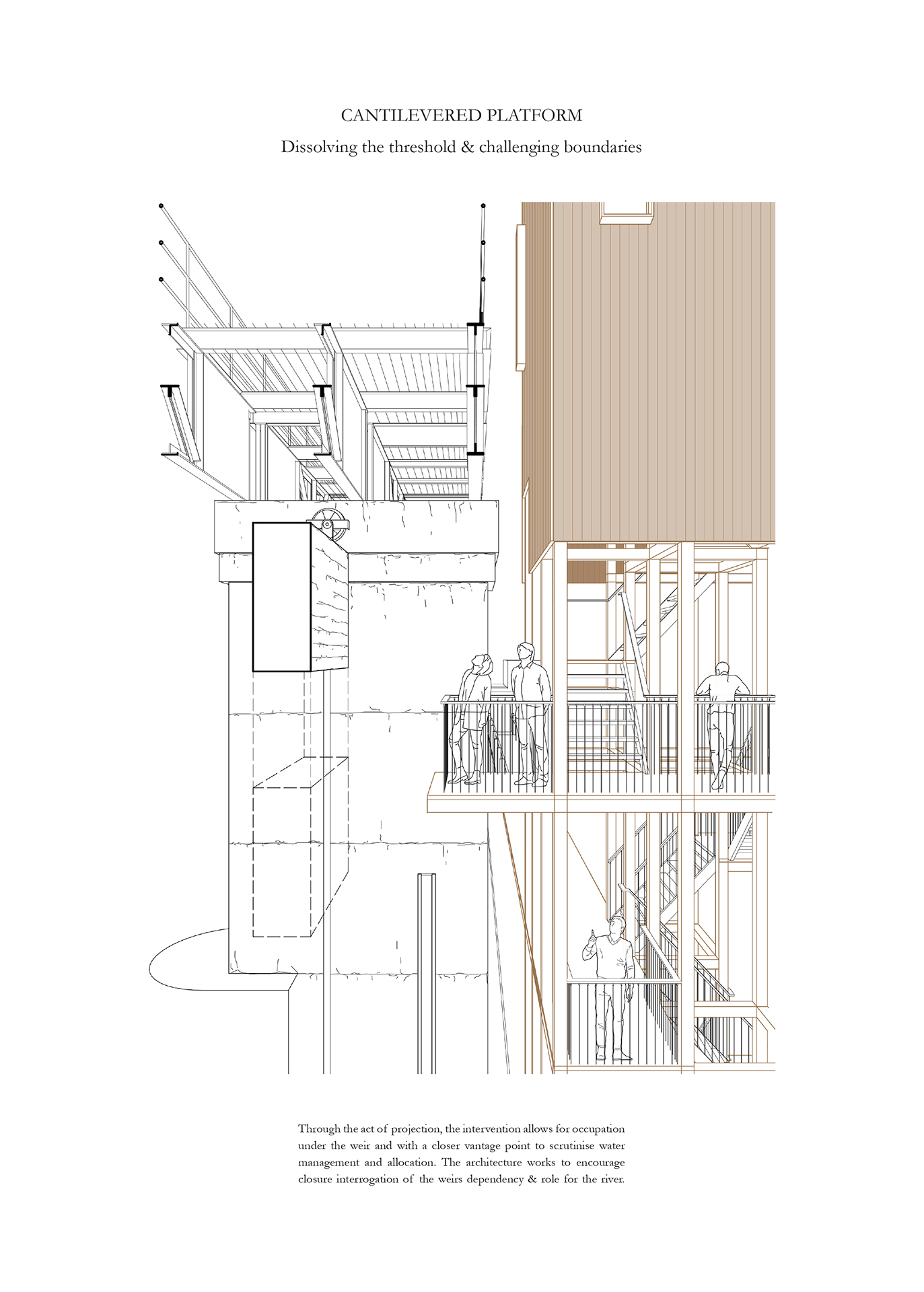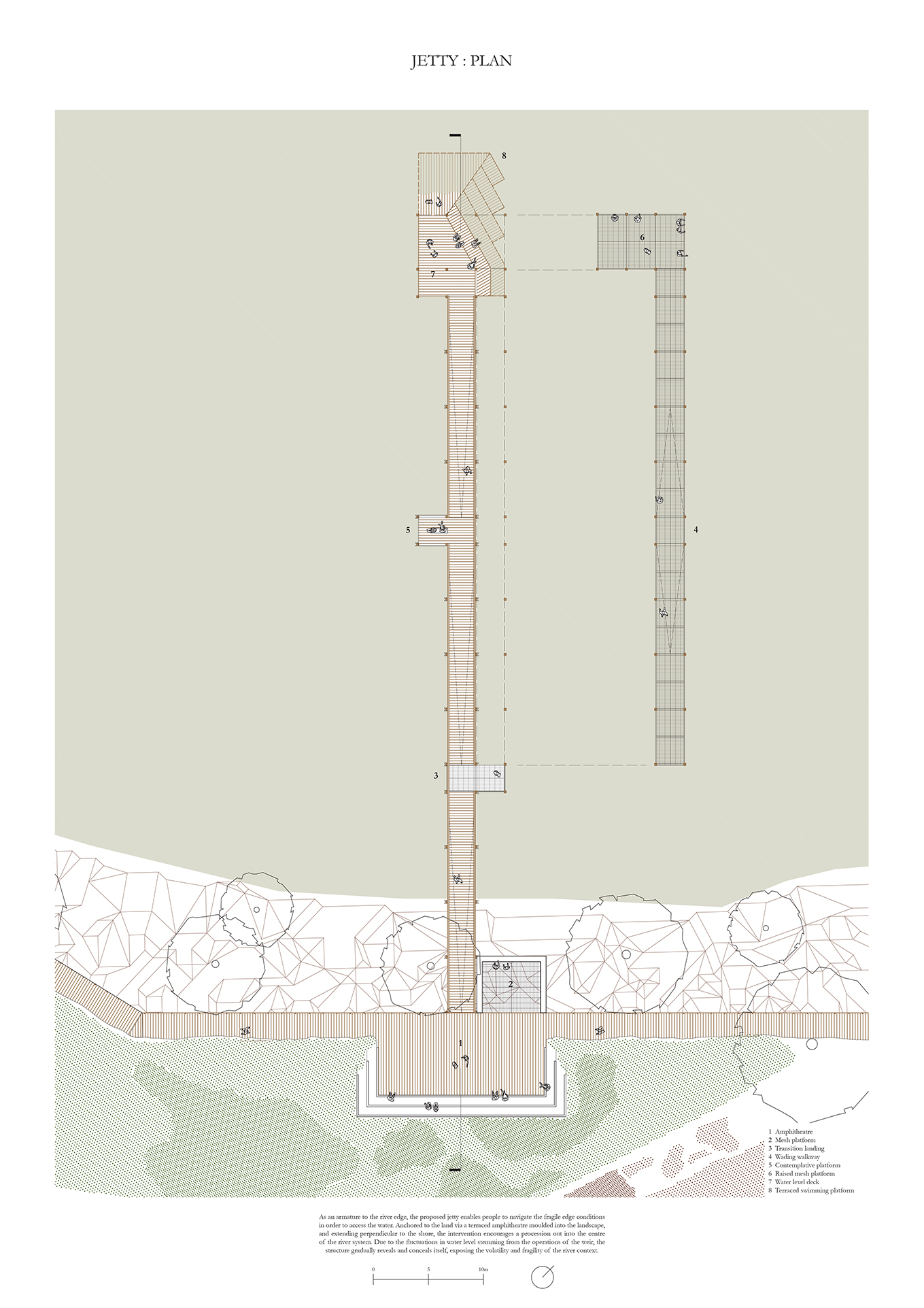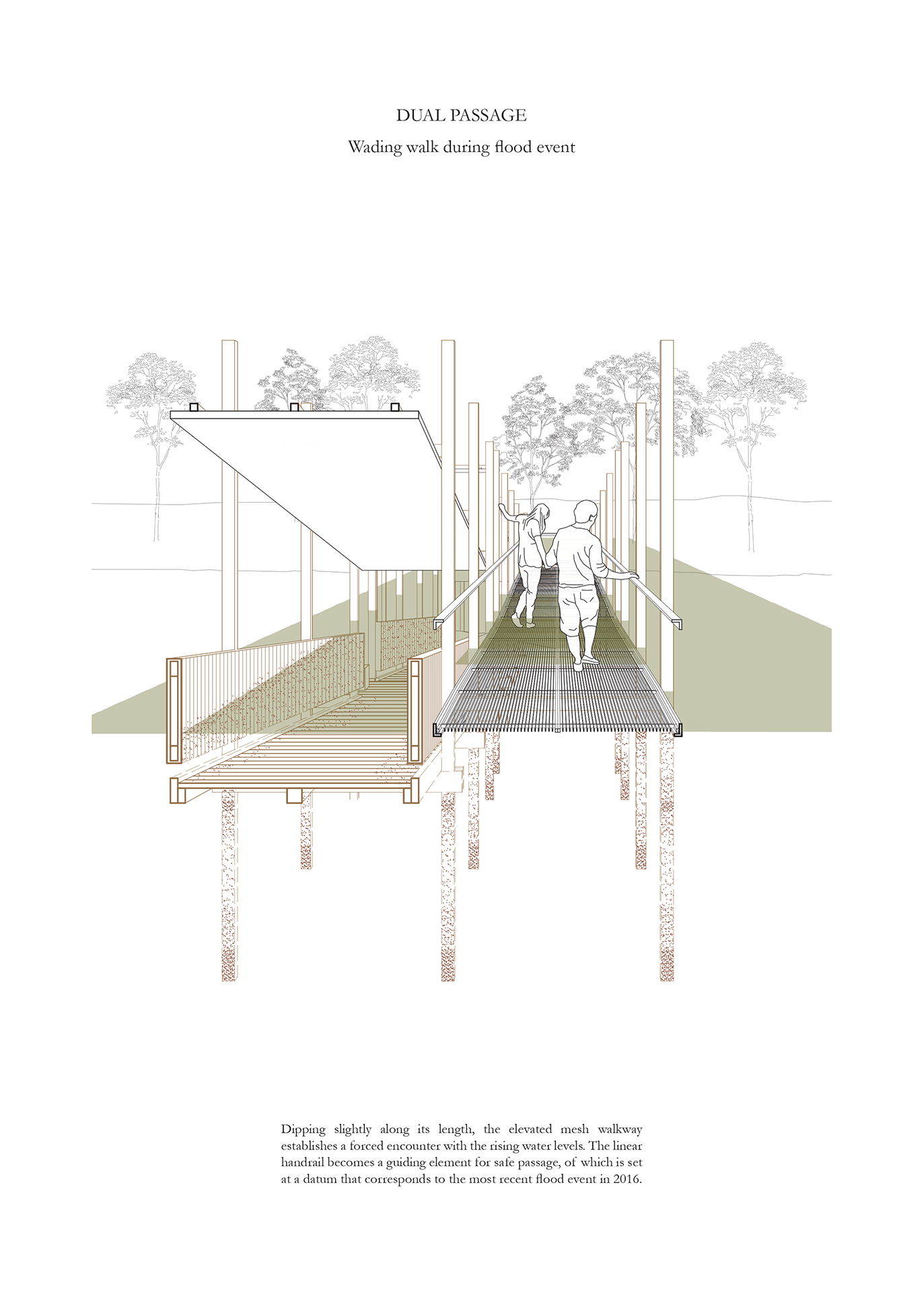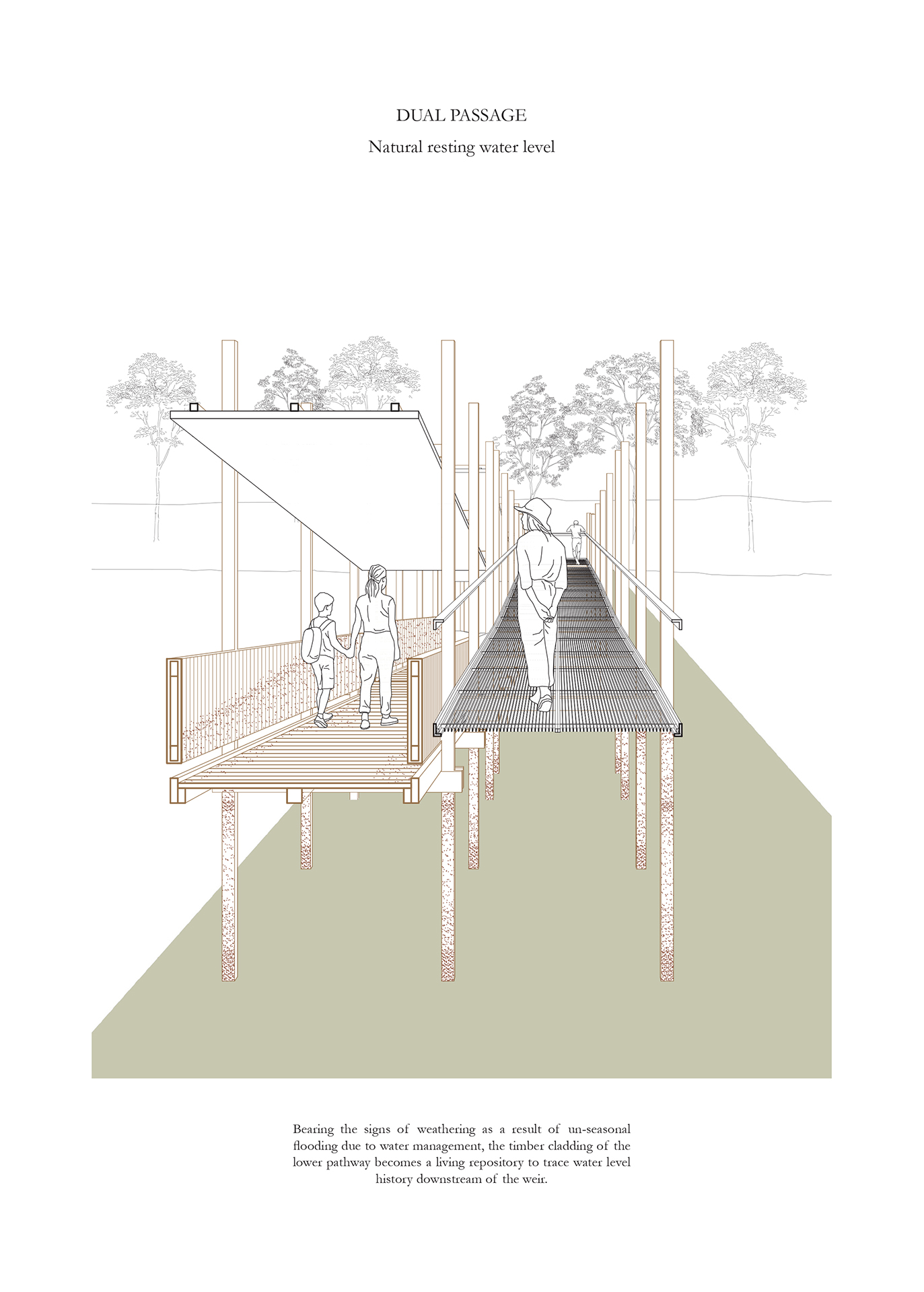Nicholas Dean
Grounds for Reconnection
Mediating the threshold between urban and non-urban
Yarrawonga is currently on a trajectory of reclassification from a District Town to a Regional Centre within the next 10 years, as defined by a population threshold of more than 10,000 residents. The growth and prosperity of the town is largely attributed to the role of Lake Mulwala as a large man-made reservoir for irrigation purposes, of which Yarrawonga is situated against.
Such dependency on water management and allocation practices for the wider region has been a contributing factor in the rapid growth and urban expansion of Yarrawonga along the river edge. As a result, the natural ecology has suffered greatly, with the removal of floodplain vegetation and deep-rooted vegetation along the riverbank leading to degradation and erosion. The propensity for such invasive measures only serves to highlight the misguided attitudes towards the condition of the river system through the severing of the threshold between the urban and non-urban realm, diminishing a reciprocal relationship between the locals of Yarrawonga and the Murray River.
Therefore, this thesis stands as a provocation for the river edge and serves to mediate the boundary between the urban and non-urban realm. Attitudes of living ‘with’ the river will be promoted within the proposal, with the architecture providing the platform for education & shared knowledge, observation and scrutiny, and experience and interaction with the surrounding river context through the program of a native plant nursery, a lookout, and a jetty, respectively. The interventions form a connected network that engages in a broader debate related to anthropomorphic modification to the natural landscape, and the impact of water management practices on ecological prosperity for Yarrawonga and the Murray.
